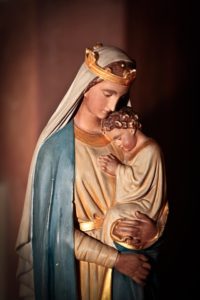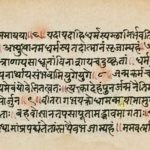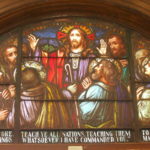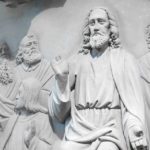There are certainly those who refer to Mary as “the Holy mother of God,” most notably Roman Catholics. The New World College Dictionary defines the word ”holy” as indicating divinity, as in the Holy Bible, God’s word. Roman Catholicism embraces this concept in the “Hail Mary” prayer: “Hail Mary, full of grace, The Lord is with thee. Blessed art thou among women and blessed is the fruit of thy womb Jesus. Holy Mary, Mother of God…
A perception of divinity bestowed upon mortal souls was not uncommon in the Roman empire when the Christian gospels were penned. In this case, however, even the gospels do not support the notion of divinity bestowed upon the mother of Jesus.
The Immaculate Conception
Of the four canonical Gospels, only two, Mathew and Luke, make any mention of the mother of Jesus at all in connection with the immaculate conception, and even these two accounts are in literal contradiction with each other. Matthew infers, that Mary becomes pregnant by the Holy Spirit, and Joseph, as a result of the infidelity, and as is customary under Jewish law, is planning to break off his engagement to Mary when he is visited by an angel who changes his mind. In Luke, it is Mary, still a virgin at the time, who is visited by the angel Gabriel who convinces her that she is to experience the miracle of immaculate conception. Neither gospel accounts make any reference to Mary’s divinity.
 The whole issue of immaculate conception and Mary’s divine status is one surrounded by ambiguity and engulfed in paradox.
The whole issue of immaculate conception and Mary’s divine status is one surrounded by ambiguity and engulfed in paradox.
By the beginning of the second century of the Common Era (C.E.), Christianity had gained a much greater following in the Greek community than it ever had enjoyed among Jews. By the mid-second century, Christianity was spreading across the Roman Empire like a grass fire. During the fourth decade of the second century the bifurcation of Christianity into two main factions, the original Gnostic and newer Trinitarian version of it, becomes apparent in the historical record. The more widespread Gnostic belief was prevalent in the countryside and the hub of its influential sphere was in the city of Alexandria in Egypt.
Trinitarianism was primarily a belief which arose and was becoming dominant in Rome.
In order to bolster the Trinitarian belief among Roman citizens, who in the second century remained predominantly polytheistic, Roman Christian presbyters may have embellished on the saga of Jesus’s birth to convey analogous relationships between it and the Roman mythological story of the vestal virgin Rhea Silvia and immaculate conception of Remis and Romulus.(W.G. Doty, World Mythology) Such metaphorical reflection has always been a common element of persuasive argument. (see Aristotle Rhetoric Stanford Encyclopedia of Philosophy)
That the Gospels, Pauline Epistles and other books of the 4th century C.E. New Testament were subject to interpretive license and editing by the Trinitarian Church, at least up until their final closed canon designation in 379 C.E., is a fact no religious historian or scholarly theologian worth their credential will deny. Indeed, the gospel according to Luke and the story of the immaculate conception by Mary, the mother of Jesus, may very well constitute empirical evidence of such, as there were undisputedly two versions of Luke’s gospel.
Marcion’s version of Luke
Besides the Luke of the canonical New Testament, there was the gospel of Luke according to Marcion, bishop of Sinope. In Marcion’s version of Luke, the first 3 chapters, as found in the canonical New Testament version, are omitted entirely. Hence, in Marcion’s Luke, there is no story of immaculate conception or for that matter the birth of Jesus at all. In fact, Marcion and his followers did not believe Jesus was born as a mortal but descended directly from heaven to take bodily form.
Contemporary Trinitarian theological scholars such as John Barton, Professor of the Interpretation of Holy Scripture at the University of Oxford, in his contributing article to “The Canon Debate” is quick to point out Marcion’s propensity to revise scriptural writings as he saw fit. (John Barton “The Canon Debate – Marcion Revisited.) But to suggest that Justin of Neapolis (later known as St Justin the Martyr) and other contemporaries of Marcion, or even the later founding fathers of Trinitarian ecclesiastical doctrine, such as Irenaeus, Origen, and Tertullian, were any less prolific in rewriting the gospels as they saw fit to bolster their homilies, is simply ludicrous.
A contrasting view was offered by early 20th century English author, editor, translator, and theosophist George Robert Stowe Mead in his book “Gnosticism: Fragments of a Faith Forgotten,” wherein he states, “it is shorter than the present Luke, and some writers of great ability have held that it was the original of Luke’s versions.” (G.R.S. Mead, Gnosticism Fragments of a Faith Forgotten)
One final paradoxical implication of Luke’s gospel, according to the Trinitarian version of it, is that if Jesus was conceived through immaculate conception, and before Joseph is wed to Mary, then, insofar as Joseph is concerned, Jesus is a bastard child and does not carry his adoptive father’s genetic line. Since it is Joseph and not Mary who is a descendant of King David, Jesus is therefore not of Jewish royal lineage and therefore can not possibly be the messianic figure prophesied by Isaiah and Elijah in the Old Testament as stipulated in the gospel of John.
Since that same gospel of John provides the founding and fundamental underpinnings of Trinitarian doctrine, the idea of immaculate conception would seem to undercut the premise of Judeo-Trinitarian conviction altogether. It is a subtle revelation, but nonetheless a contradiction.






